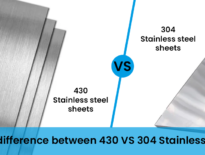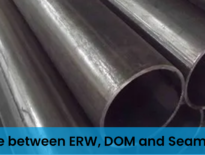SAE 1045 steel, a widely used medium-carbon steel, is a popular choice around the world due to its excellent balance of high strength, weldability, and impact resistance. Its versatility and reliability make it ideal for many applications, and its affordability adds to its appeal, offering a cost-effective solution for various industries.
Before purchasing, it’s important to understand the key aspects of SAE 1045 steel to ensure you’re getting the right material for your needs. This guide provides a clear overview of SAE/AISI 1045 steel, including its hot-rolled, normalized, and cold-rolled forms, helping you make informed decisions about this adaptable steel grade.
The properties of SAE 1045 steel plate are as follows
- It offers good weldability and machinability, but it does not respond well to nitriding.
- It has high strength and impact resistance, whether in hot-rolled or normalized conditions.
- The ultimate tensile strength is approximately 565 MPa.
- The yield strength is about 310 MPa.
- The hardness measures 163 on the Brinell scale.
These features make SAE 1045 steel plate a reliable choice for applications requiring a balance of strength and workability.
1045 Steel Composition
| Grade | C | Si | Mn | P | S |
| 1045 | 0.43-0.50 | 0.15-0.35 | 0.60-0.90 | ≤0.04 | ≤0.05 |
1045 Carbon Steel Properties
| 7.86 | |
| Melting point,℃ | 1433 |
| Specific heat capacity,(0~100℃),J/(kg.k) | 577.78(200℃) |
| Linear expansion coefficient,10^-6/k | 0~100℃ |
| 11.7 | |
| Poisson’s ratio | 0.269 |
| Elastic Modulus,Mpa | 209000 |
| Shear modulus,Mpa | 82300 |
| Thermal conductivity,W/(m.K) | 46.89(200℃) |
| Resistivity,10^-8 Ω.m | 32.0(200℃) |
1045 Hot Rolled Plate Mechanical Properties
| MECHANICAL PROPERTIES | Metric | Imperial |
| Tensile Strength, Ultimate | 565 MPa | 81,900 PSI |
| Tensile Strength, Yield | 310 MPa | 45,000 PSI |
| Modulus of Elasticity | 200 GPa | 29,000 KSI |
| Hardness, Brinell | 163 | 163 |
| Elongation at Break (in 50 mm) | 16.0% | 16.0% |
| Bulk Modulus (Typical for Steel) | 140 GPa | 20,300 KSI |
| Poissons Ratio | 0.290 | 0.290 |
| Shear Modulus | 80 GPa | 11,600 KSI |
SAE 1045 Thermal Properties
| Properties | Metric | Imperial |
| Thermal conductivity | 51.9 W/mK | 360 BTU in/hr.ft2.°F |
| Thermal expansion coefficient (@0.000-100°C/32-212°F) | 11.2 µm/m°C | 6.22 µm/m°C |
SAE 1045 Steel Heat Treatment Process
- Normalizing Temperature: 830-880℃
- Holding Time: The holding time depends on the size of the steel and the load. Smaller workpieces require shorter holding times, while larger ones need longer times. However, holding the steel for too long can cause coarse grains and damage the material, affecting its properties.
- Cooling Method: Air cooling is recommended. For faster cooling, misting water can be used. Care must be taken not to cool the material too quickly, as it can cause cracking.
Rationale:
Normalizing is an important heat treatment step for SAE 1045 steel. It can be used as the final treatment for general-purpose parts or as preparation for quenching and tempering. This process improves the grain structure and makes the steel more uniform, ensuring better performance in later treatments. Balancing holding time and cooling is critical to maintain material strength and avoid defects.
Aisi 1045 Steel Plate Size range
| Length x Width | Thickness |
|---|---|
| mm | mm |
| 2000 x 1000 | 0.8 |
| 2440 x 1220 | 1.0 |
| 2500 x 1250 | 0.9 |
| 2500 x 1250 | 0.8 |
| 2000 x 1000 | 1.20 |
| 2000 x 1000 | 1.0 |
| 2000 x 1000 | 0.9 |
| 1830 x 1220 | 1.0 |
| 2500 x 1250 | 1.20 |
AISI 1045 Carbon steel plate Length Tolerances
| Component length (mm) | OD 30-100 mm | OD 100-254 mm |
|---|---|---|
| 600-1200 | + 3.0/- 0 | + 4.0/- 0 |
| 100-600 | + 2.0/- 0 | + 3.0/- 0 |
| 1200-5000 | + 5.0/- 0 | + 6.0/- 0 |
| 10-100 | + 1.0/- 0 | + 2.0/- 0 |
Applications of SAE 1045 Steel
- Axles: Due to its high strength and toughness, SAE 1045 steel is ideal for manufacturing axles that can withstand heavy loads and impact.
- Pins: Its good machinability makes SAE 1045 steel suitable for producing durable pins used in mechanical systems.
- Shafts: With excellent impact resistance and strength, SAE 1045 steel is widely used for making shafts in various machinery.
- Gears: The material’s wear resistance and strength make it a great choice for gears that require durability in demanding conditions.
- Sockets: SAE 1045 steel is often used for producing sockets due to its toughness and machinability.
- Rams: Its strength and impact properties make SAE 1045 steel a reliable material for manufacturing rams used in hydraulic systems.
Conclusion
SAE 1045 steel is a versatile and widely used medium-carbon steel that offers an excellent balance of strength, machinability, and impact resistance. Its affordability and adaptability make it a preferred choice for applications like axles, gears, shafts, and more. Whether in its hot-rolled or normalized condition, SAE 1045 provides reliable performance in demanding environments. Its ability to be heat-treated further enhances its mechanical properties, ensuring it meets the requirements of various industries. Overall, SAE 1045 is a cost-effective and practical solution for a wide range of engineering applications.
FAQs
What grade of steel is 1045?
1045 steel is a medium carbon steel with good weldability, higher strength, and impact resistance, making it a popular and cost-effective choice for various applications.
What is SAE 1045 used for?
SAE 1045 is widely used for manufacturing components like gears, bolts, studs, axles, crankshafts, and machinery parts due to its high tensile strength, durability, and good machinability.
What is 1045 carbon steel good for?
1045 carbon steel is known for its medium tensile strength, good weldability, machinability, and high strength. It is commonly used in manufacturing machinery parts, gears, crankshafts, shafts, axles, bolts, studs, pinions, and support plates.


